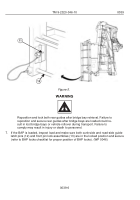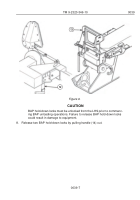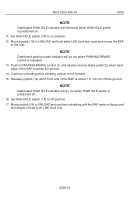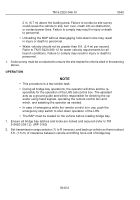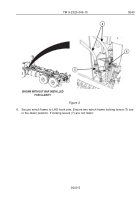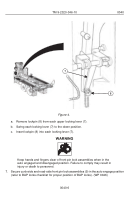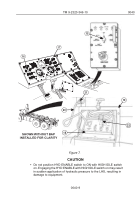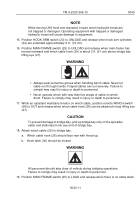TM-9-2320-346-10 - Page 288 of 1184
2 in. (6.7 m) above the loading area. Failure to conduct a site survey
could cause the vehicle to slip, turn over, crash into an obstruction,
or contact power lines. Failure to comply may result in injury or death
to personnel.
•
Unloading the BAP without disengaging hold-down locks may result
in injury or death to personnel.
•
Water velocity should not be greater than 8 ft. (2.4 m) per second.
Refer to TM 5-5420-290-12 for water velocity requirements for all
launch conditions. Failure to comply may result in injury or death to
personnel.
1.
A site survey must be conducted to ensure the site meets the criteria cited in the warning
above.
OPERATION
NOTE
•
This procedure is a two soldier task.
•
During all bridge bay operations, the operator will drive and be re-
sponsible for the operation of the LHS cab control box. The assistant
acts as a ground guide and will be responsible for directing the op-
erator using hand signals, operating the remote control box and
winch, and assisting the operator as needed.
•
In case of emergency while the remote control is in use, push the
emergency stop switch to shut down operation of the LHS.
•
The BAP must be loaded on the vehicle before loading bridge bay.
1.
Ensure all bridge bay latches and locks are locked and secured (refer to TM
5-5420-209-12). (WP 0160)
2.
Set transmission range selector (1) to R (reverse), and back up vehicle so there is about
5 ft. (1.5 m) of clearance between vehicle and lifting hook end of bridge bay.
TM 9-2320-346-10
0040
0040-2
Back to Top

